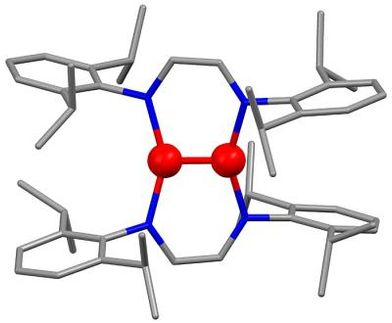Catalyst Tape - Sticky teflon: recovery of fluorine-containing catalysts with a teflon strip
Advertisement
Cake doesn't cling to pans with a nonstick coating, fried eggs don't stick to a Teflon pan. So nothing sticks to teflon? Not so! Teflon can also be very "sticky", which is a desirable property, particularly to John A. Gladysz and Long V. Ding (University of Erlangen-Nüremberg), who can "gather together" catalyst molecules after a reaction by a simple method: the molecules get stuck to a teflon strip. Recovery of catalysts is important because they often contain rare metals such as platinum, their production can be very difficult, and they can contaminate the product of the reaction they catalyze. When the catalyst is dissolved in the same solvent as the reagents, getting the catalyst back can be a difficult matter. A relatively new but quite popular technique uses "ponytails", carbohydrate chains with many fluorine atoms, which are attached to the catalyst molecules. Such catalysts can be extracted with highly fluorinated solvents. The disadvantage: the "fluorous" solvents are very expensive and pose a risk to the environment.
The Erlangen researchers thought that perhaps there doesn't need to be a solvent at all; maybe a fluorine-containing solid could do the job. Their test catalyst consists of a rhodium metal complex hooked to a fluorous ponytail. The orange-red complexes are insoluble in organic solvents at room temperature. The reaction is run at a higher temperature, so the catalyst dissolves. Subsequent cooling then causes it to precipitate out again. "Our goal was to develop a suitable carrier that ensures easy recovery of even tiny amounts of catalyst," says Gladysz. "In fact, this works with a simple, commercially available teflon tape." Just put the teflon strip into the reaction mixture, cool it off, and the white tape starts to turn orange-red as it adsorbs the catalyst.
Teflon is a good plastic for processing. Says Gladysz: "The manufacture of entire reactor linings or reactor parts made of teflon is conceivable. The catalysts could then be released into the reaction mixture or taken out again, depending on the temperature." Another possibility would be a "catalyst tape", a prefabricated catalyst-coated teflon strip. "Even small amounts of catalyst could then be measured out by units of length - no weighing necessary," according to Gladysz.
Most read news
Other news from the department science

Get the chemical industry in your inbox
By submitting this form you agree that LUMITOS AG will send you the newsletter(s) selected above by email. Your data will not be passed on to third parties. Your data will be stored and processed in accordance with our data protection regulations. LUMITOS may contact you by email for the purpose of advertising or market and opinion surveys. You can revoke your consent at any time without giving reasons to LUMITOS AG, Ernst-Augustin-Str. 2, 12489 Berlin, Germany or by e-mail at revoke@lumitos.com with effect for the future. In addition, each email contains a link to unsubscribe from the corresponding newsletter.





























































